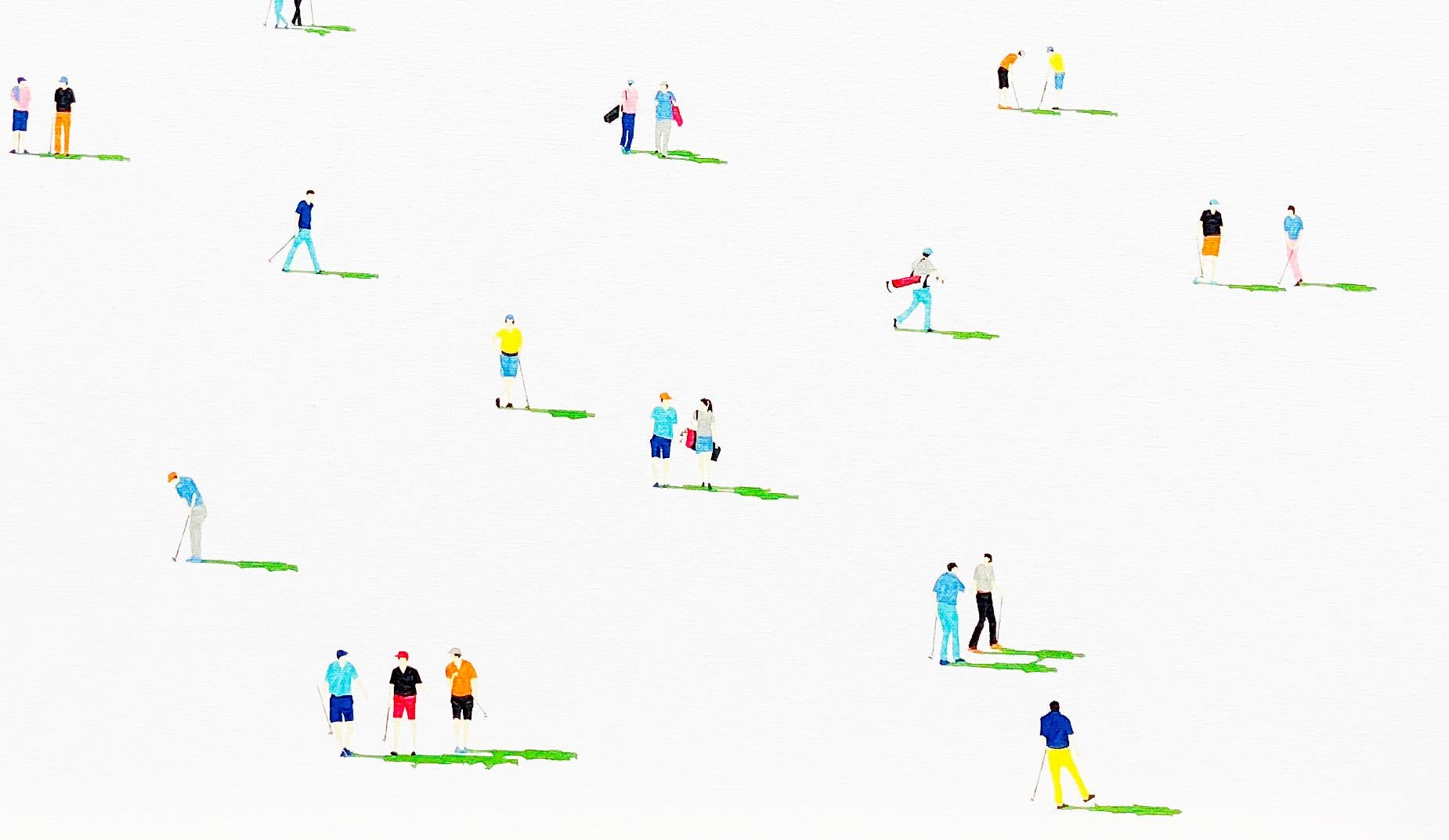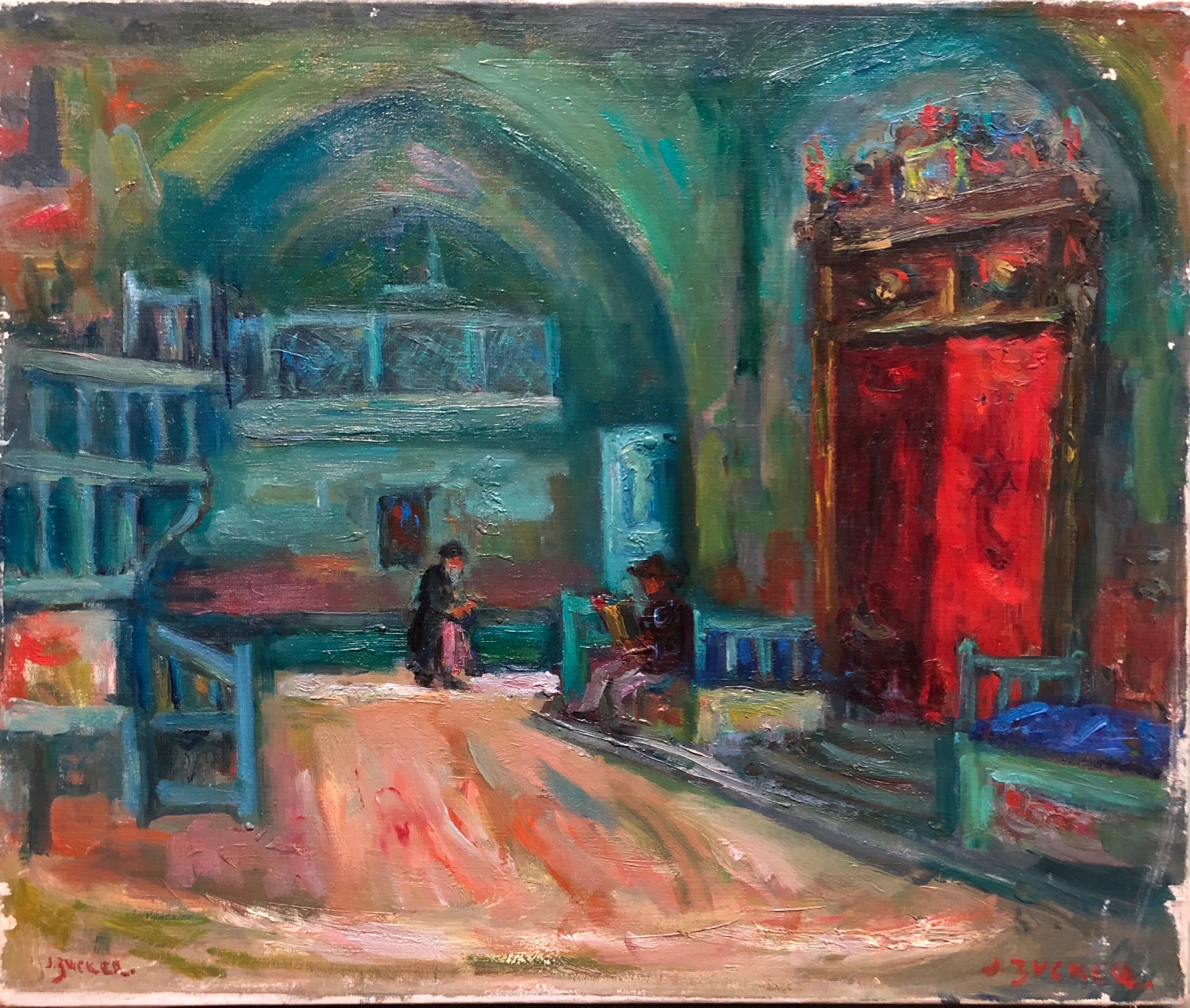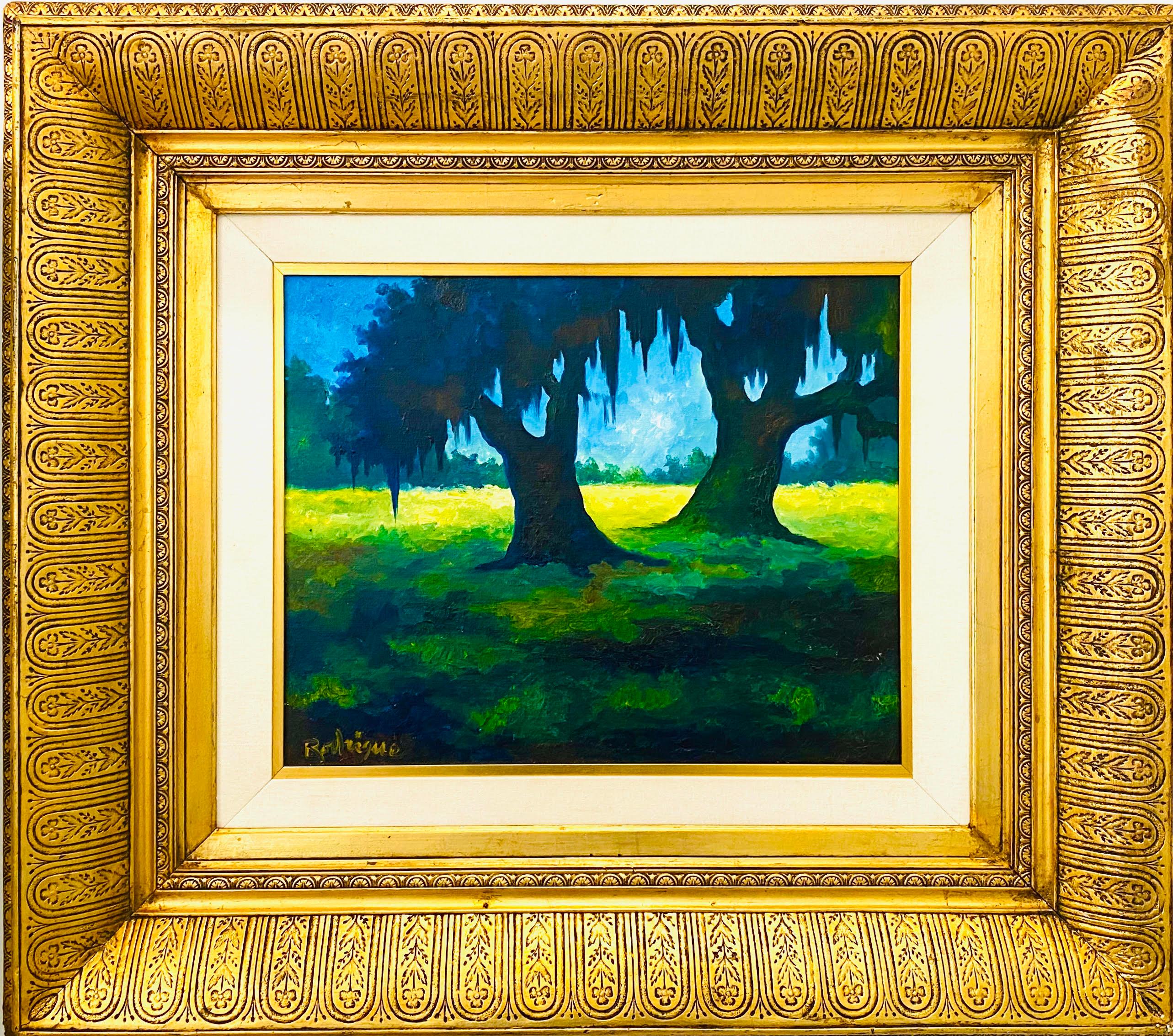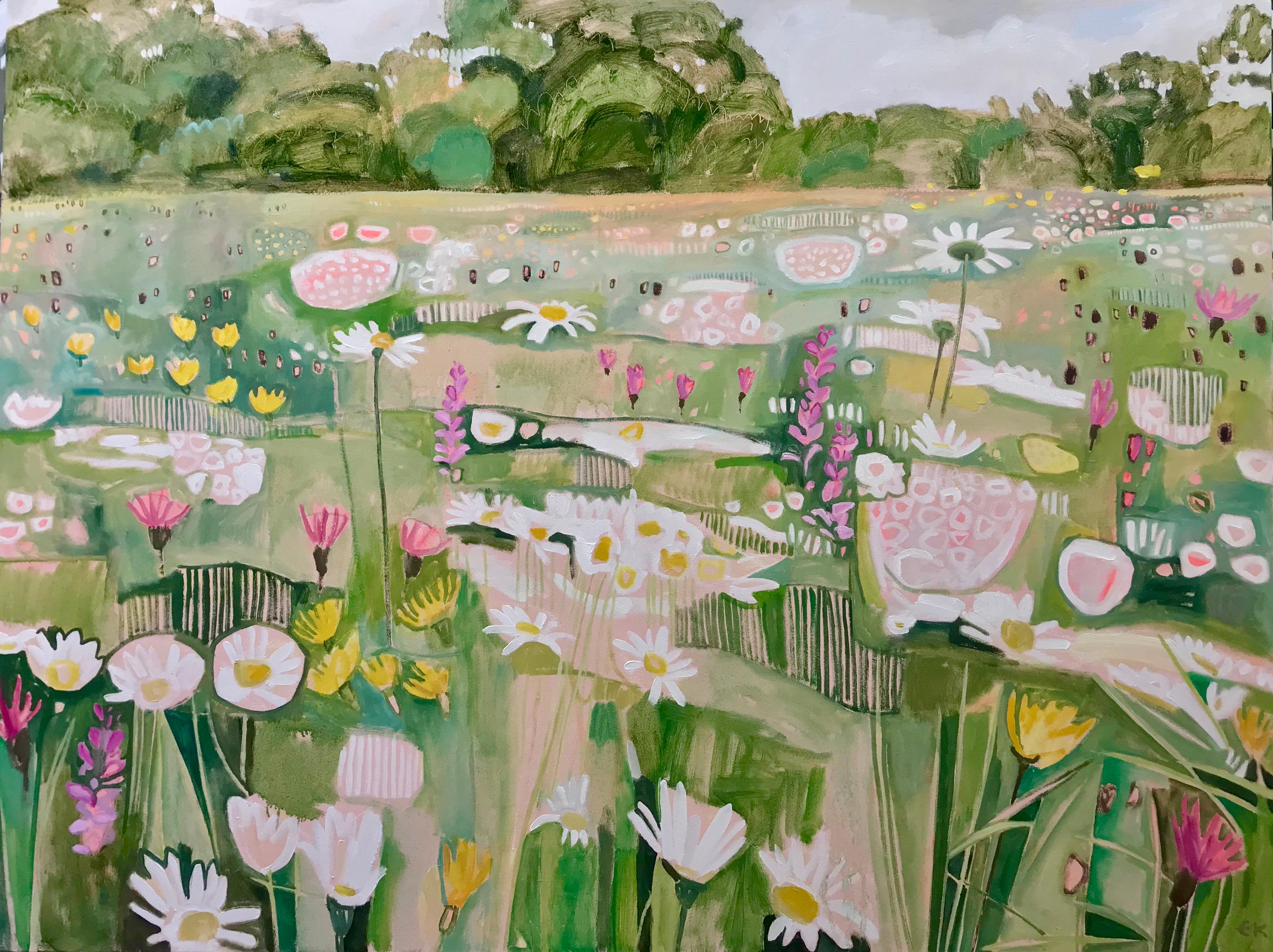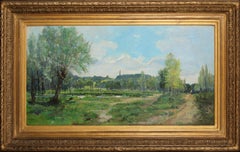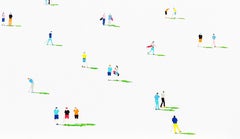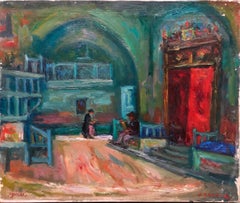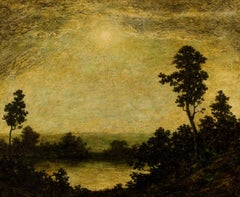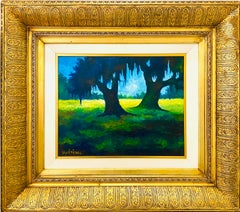Items Similar to Boat Harbour Off The Suffolk Coast, 20th Century Edward Brian SEAGO (1910-19
Want more images or videos?
Request additional images or videos from the seller
1 of 15
Edward SeagoBoat Harbour Off The Suffolk Coast, 20th Century Edward Brian SEAGO (1910-19
About the Item
Boat Harbour Off The Suffolk Coast, 20th Century
by Edward Brian SEAGO (1910-1974) sales to £280,000
20th Century English view of a boats in a Suffolk Harbour, oil on board by Edward Seago. Good quality and condition example of the artists work and presented in a good period frame. Signed bottom right, inscribed verso.
Provenance: A private estate, Hampshire, UK
Measurements: 21.5" x 18" framed approx
- Creator:Edward Seago (1910-1974, British)
- Dimensions:Height: 18.5 in (46.99 cm)Width: 21.5 in (54.61 cm)
- Medium:
- Period:
- Condition:
- Gallery Location:Blackwater, GB
- Reference Number:Seller: 7832951stDibs: LU1577212368452
About the Seller
4.9
Platinum Seller
These expertly vetted sellers are 1stDibs' most experienced sellers and are rated highest by our customers.
Established in 2008
1stDibs seller since 2021
211 sales on 1stDibs
Typical response time: 2 hours
- ShippingRetrieving quote...Ships From: Blackwater, United Kingdom
- Return PolicyA return for this item may be initiated within 14 days of delivery.
Authenticity Guarantee
In the unlikely event there’s an issue with an item’s authenticity, contact us within 1 year for a full refund. DetailsMoney-Back Guarantee
If your item is not as described, is damaged in transit, or does not arrive, contact us within 7 days for a full refund. Details24-Hour Cancellation
You have a 24-hour grace period in which to reconsider your purchase, with no questions asked.Vetted Professional Sellers
Our world-class sellers must adhere to strict standards for service and quality, maintaining the integrity of our listings.Price-Match Guarantee
If you find that a seller listed the same item for a lower price elsewhere, we’ll match it.Trusted Global Delivery
Our best-in-class carrier network provides specialized shipping options worldwide, including custom delivery.More From This Seller
View AllAn Allegory of Spring, 16th Century Workshop Of Jacopo Bassano (1510-1592)
By Jacopo Bassano
Located in Blackwater, GB
An Allegory of Spring, 16th Century
Workshop Of Jacopo Bassano (1510-1592)
Huge 16th Century Italian Old Master Allegory of Spring, oil on canvas. Excellent quality and condition ...
Category
16th Century Landscape Paintings
Materials
Oil, Canvas
Fishing At The Four Arches, Bingley, Yorkshire, Joseph Clayton Bentley
Located in Blackwater, GB
Fishing At The Four Arches, Bingley, Yorkshire, dated 1849
Joseph Clayton Bentley (1809-1851)
Large 19th Century English river fishing landscape at The Four Arches, Bingley, York...
Category
19th Century Landscape Paintings
Materials
Oil, Canvas
Landscape In July, dated 1892 - "Gift To A friend" by Georges PAUL-MANCEAU
Located in Blackwater, GB
Landscape In July, dated 1892 - "Gift To A friend"
by Georges PAUL-MANCEAU (1872-1955)
Huge 19th Century French Impressionist summer landscape, oil on canvas by Georges Paul-Mance...
Category
19th Century Landscape Paintings
Materials
Canvas, Oil
View of Pen Maen Mawr, Anglesey in the distance, dated 1864
By Edmund John Niemann
Located in Blackwater, GB
View of Pen Maen Mawr, Anglesey in the distance, dated 1864
by Edmund John Niemann (1813-1876)
Large 19th Century view of Pen Maen Mawr looking towards Anglesey, oil on canvas by E...
Category
19th Century Landscape Paintings
Materials
Canvas, Oil
The Three Graces, circa 1930 English Symbolist School
Located in Blackwater, GB
The Three Graces, circa 1930
English Symbolist School
Large circa 1930 English School scene of three nudes on a shore as The Three Graces, oil on canvas. Excellent quality and cond...
Category
Early 20th Century Landscape Paintings
Materials
Oil, Canvas
View Of Whampoa Anchorage China, 19th Century Chinese Trade Export Port
Located in Blackwater, GB
View Of Whampoa Anchorage, 19th Century
Rare Chinese Export Trade Landscape
Large 19th century view of Whampoa Anchorage, oil on canvas. Excellent quality and condition extensive view of the famous port in the Guangzhou region that was a crucial trade...
Category
19th Century Landscape Paintings
Materials
Oil, Canvas
You May Also Like
Golfers 13, Figurative Painting, Original Sports Art, Golfing Artwork
Located in Deddington, GB
With golfing as one of the favourite pastime of urban city life, golfers became the latest subject of my Lowry style paintings. Golfers appear to be randomly scattered on the crisp w...
Category
2010s Minimalist Figurative Paintings
Materials
Canvas, Oil
Synagogue Interior Jerusalem French Judaica Oil Painting Israeli Bezalel School
By Jacques Zucker
Located in Surfside, FL
Genre: Post Impressionist
Subject: Landscape
Medium: Oil
Surface: Canvas
Country: France
Dimensions: 24" x 20"
Jacques Zucker was born in 1900 in Radom, Poland. He was a notably famous Jewish American artist mostly known for his expressionist figure paintings. In his young years he traveled to Palestine to study fine arts at the Bezalel Art School in Jerusalem. In 1917 he joined the British Royal Fuesiliers under the leadership of General Allenby to liberate Palestine from the Turks. After the first World War he settled in Paris, where he continued his studies at Académie Julian and Academie Colarossi. He then emigrated to the United States in 1922 and continued his art studies at the National Academy of Design. He supported himself by designing jewelry. In 1925 he returned to Paris and studied at the Academie de la Grande Chaumier et Colarossi. During the Depression he worked for the WPA. From 1928 he took part in the Paris Salons: Autumn and the Tuileries. His works are expressionistic variations in the type of the Ecole de Paris. As a protégé of both Chaim Soutine and Renoir, hints of their style can be observed in much of his own work. Zucker’s style, that may have been influenced from the art of artists such as Marc Chagall, took pride in being an “internationalist”, standing the art of painting in its highest expression is universal no matter where the canvas was created. People who respond to quality in art will understand the beauty and meaning, in their own land or in a foreign land, this was his main idea behind his artworks that was exhibited in numerous solo show in leading galleries and museums in New York, Paris, Tel Aviv, and other art centers. Claude Roger-Marx of Figaro Litteraire, dean of French art critics, write a comprehensive study of Zucker’s illustrated with 135 color and black and white plates. He traveled widely, including Italy, Spain, Portugal, Mexico and Israel. From then on Zucker lived alternately in New York and Paris, maintaining homes in both places, and spent considerable time painting in Mexico, Portugal, Greece, and Israel. Zucker's post-impressionist works including town and landscapes, still-lives, and portraits, are part of an array of permanent installments in numerous museums and private collections in Tel Aviv, including the Joseph Hirschorn collection in Washington, D. C., the Museum of Modern Art in Paris, and the Bezalel Art Museum in Jerusalem. In 1947 he settled in Arcueil near Paris. Zucker died in 1981 in New York.
The School of Paris, Ecole de Paris, was not a single art movement or institution, but refers to the importance of Paris as a center of Western art in the early decades of the 20th century. Between 1900 and 1940 the city drew artists from all over the world and became a centre for artistic activity. School of Paris was used to describe this loose community, particularly of non-French artists, centered in the cafes, salons and shared workspaces and galleries of Montparnasse. Before World War I, a group of expatriates in Paris created art in the styles of Post-Impressionism, Cubism and Fauvism. The group included artists like Pablo Picasso, Marc Chagall, Amedeo Modigliani and Piet Mondrian. Associated French artists included Pierre Bonnard, Henri Matisse, Jean Metzinger and Albert Gleizes.
The term "School of Paris" was used in 1925 by André Warnod to refer to the many foreign-born artists who had migrated to Paris. The term soon gained currency, often as a derogatory label by critics who saw the foreign artists—many of whom were Jewish—as a threat to the purity of French art. Art critic Louis Vauxcelles, noted for coining the terms "Fauvism" and "Cubism", Waldemar George, himself a French Jew, in 1931 lamented that the School of Paris name "allows any artist to pretend he is French. it refers to French tradition but instead annihilates it.
The artists working in Paris between World War I and World War II experimented with various styles including Cubism, Orphism, Surrealism and Dada. Foreign and French artists working in Paris included Jean Arp, Joan Miro, Constantin Brancusi, Raoul Dufy, Tsuguharu Foujita, artists from Belarus like Michel Kikoine, Pinchus Kremegne, and Jacques Lipchitz, the Polish artist Marek Szwarc and others such as Russian-born prince Alexis Arapoff.
A significant subset, the Jewish artists, came to be known as the Jewish School of Paris or the School of Montparnasse. The core members were almost all Jews, and the resentment expressed toward them by French critics in the 1930s was unquestionably fueled by anti-Semitism. Jewish members of the group included Emmanuel Mané-Katz, Chaim Soutine, Adolphe Féder, Chagall, Moïse Kisling, Maxa...
Category
Mid-20th Century Post-Impressionist Landscape Paintings
Materials
Canvas, Oil
Into the Night
By Ralph Albert Blakelock
Located in New York, NY
Signed lower left in arrowhead: RA Blakelock.
Category
Late 19th Century Hudson River School Landscape Paintings
Materials
Canvas, Oil
$195,000
Louisiana Landscape with Two Oak Trees
By George Rodrigue
Located in Metairie, LA
The Oak Tree defined Rodrigue’s early and beloved works, and this piece represented a return to his roots to create a stunning work in the color palate of the artist’s iconic Blue Do...
Category
21st Century and Contemporary Pop Art Landscape Paintings
Materials
Acrylic, Oil, Canvas
Ryewater Farm V, Dorset, Original painting, Floral Landscape Meadow art, Pastels
By Elaine Kazimierczuk
Located in Deddington, GB
This is a lyrical work depicting a traditional wildflower meadow in full bloom in high summer. The pastel colours are drawn from soft green grasses and the pretty pinks and yellows o...
Category
2010s Abstract Landscape Paintings
Materials
Canvas, Oil, Oil Crayon, Oil Pastel
Kaufmann Desert House - Right, Original painting, Contemporary, Hockney, Glamour
By Karen Lynn
Located in Deddington, GB
This is an oil painting of the iconic house in California designed by the famous architect Richard Neutra. I love to paint this house from many different angles and always focusing o...
Category
2010s Contemporary Landscape Paintings
Materials
Canvas, Oil
Recently Viewed
View AllMore Ways To Browse
Landscape 19 Century
Edward View
Oil On Canvas By Edward
20th Century Landscapes Uk
Harbour Oil
Brian Brown
Antique Suffolk
19century Landscape Oil Painting
English Coast
Suffolk Landscape
English Boat Paintings
19th Century Painting Suffolk
18 Century English Landscape Oil Painting
Brian English
Sold Item Prices
Mountain Impressionist Landscape
Small Green Landscape
1950s Oil On Canvas Paintings
